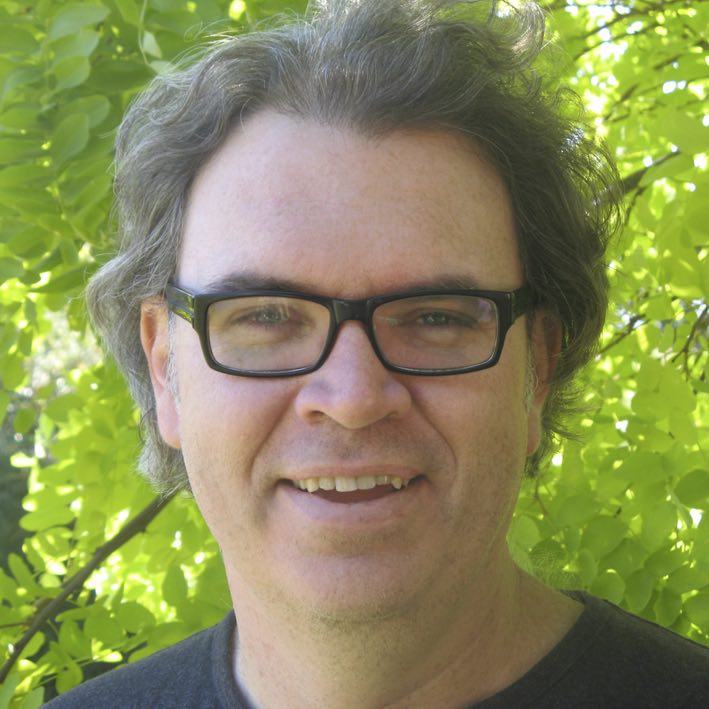 Andrew Joyner is an illustrator, author and cartoonist based in South Australia. He has illustrated a number of picture books, and he wrote and illustrated a chapter book series about a warthog named Boris. He has also illustrated for newspapers and magazines, including the Wall Street Journal, Reader’s Digest, and Rolling Stone magazine, among others.
Andrew Joyner is an illustrator, author and cartoonist based in South Australia. He has illustrated a number of picture books, and he wrote and illustrated a chapter book series about a warthog named Boris. He has also illustrated for newspapers and magazines, including the Wall Street Journal, Reader’s Digest, and Rolling Stone magazine, among others.
Andrew’s latest book, Duck and Hippo in the Rainstorm with author Jonathan London, is out March 1. The following is a complete transcript of Andrew’s interview with Cracking the Cover.
Have you always wanted to be an artist/illustrator?
I’ve always drawn, and at school I was that kid in class who could draw well. But I didn’t really study art or illustration—in fact I stopped studying art at school after grade 10, when I moved from a country high school to a bigger city school. But drawing always stuck with me, and I kept drawing for the school and university paper, for band posters and mainly just for my own amusement. I didn’t even think of pursuing it as a career until I was in my mid-twenties, and even then it seemed more of a whim than a plan. But I was lucky, and I got few illustrations in some magazines, and soon I found myself freelancing full time for newspapers and magazines throughout Australia.
I definitely didn’t plan to become a children’s book illustrator. The author Ursula Dubosarsky saw some of my magazine work, and asked her publisher to approach me about illustrating her latest picture book manuscript. That became my first picture book, The Terrible Plop, and ever since then nearly all of my work is in children’s books. I just found that I loved it—it’s both the most challenging and most rewarding work I’ve ever done. Plus I found the more I did the more I wanted to do. Maybe I’m just hoping to get it right one day!
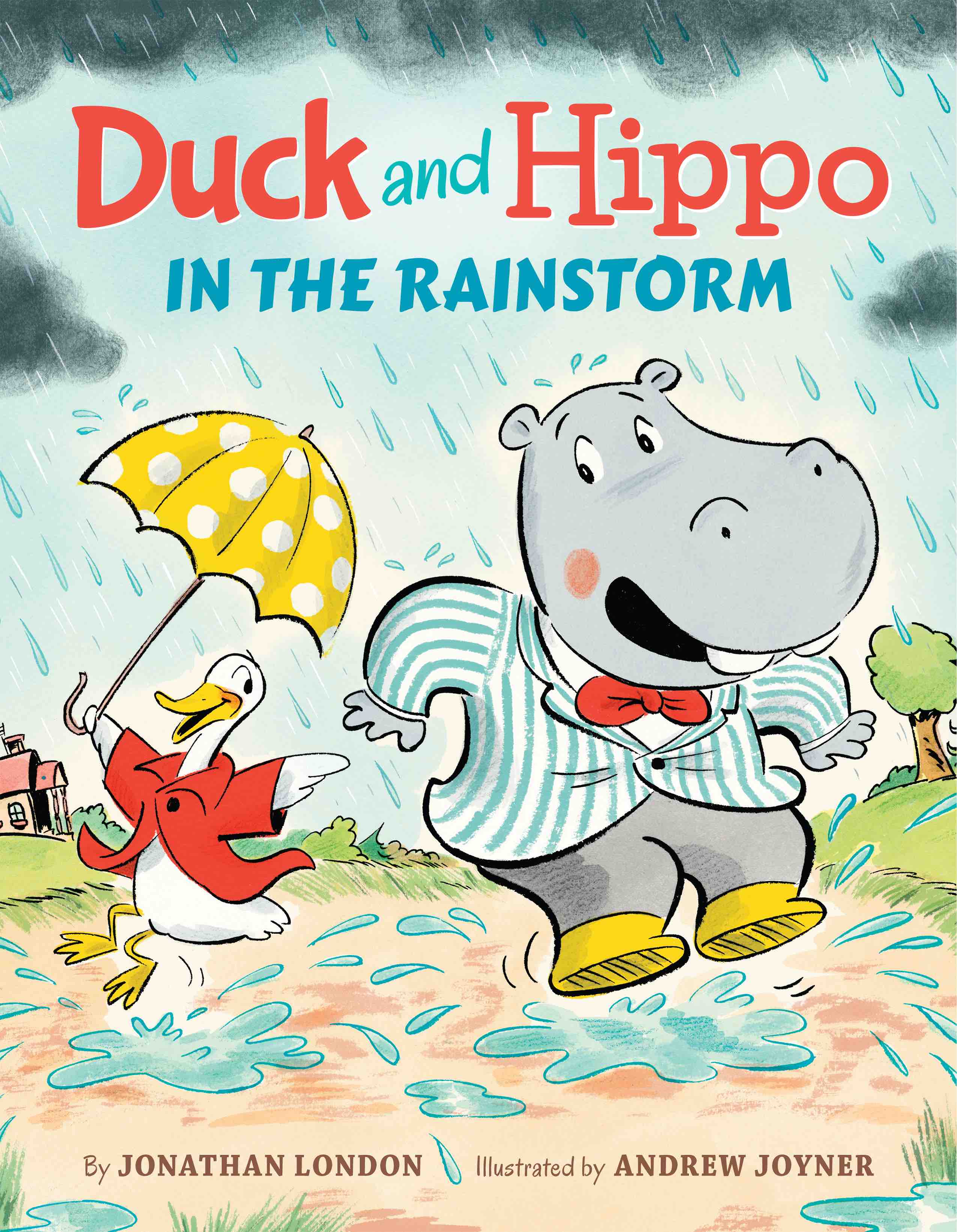 You have worked as an editorial illustrator. How does that kind of work differ from children’s books?
You have worked as an editorial illustrator. How does that kind of work differ from children’s books?
Time is the main difference—editorial deadlines are much tighter. Yet, funnily enough, I find time management much harder with children’s books. With editorial work, often the perfect idea would appear in my mind five minutes after the deadline had passed and the illustration was submitted. So it taught me a certain level of acceptance. Plus newspapers are quite ephemeral. But a children’s book feels permanent, which perhaps creates a certain level of anxiety and self-doubt. Now I sound like I’m analyzing myself!
Although I still take quite a few elements from editorial work and use it in my children’s book illustration. I like to think of editorial work as creating a poster for an idea—the illustration needs to “read” quickly and clearly, to have an immediate impact, and still have that element of surprise and imagination. With children’s book work I’m doing something similar, but in the service of a story.
What is it about children’s books that makes you want to illustrate them?
A picture book is a remarkable and unique invention. Just think of the variety of picture books on any bookstore, home or library shelf, each one containing its own world and story within just 32 pages (or thereabouts) of words and pictures. It still feels slightly miraculous to me when it all comes together in the final book. Plus I do have a sense that what you’re creating is a kind of gift, a story and an experience that you’re giving to the reader.
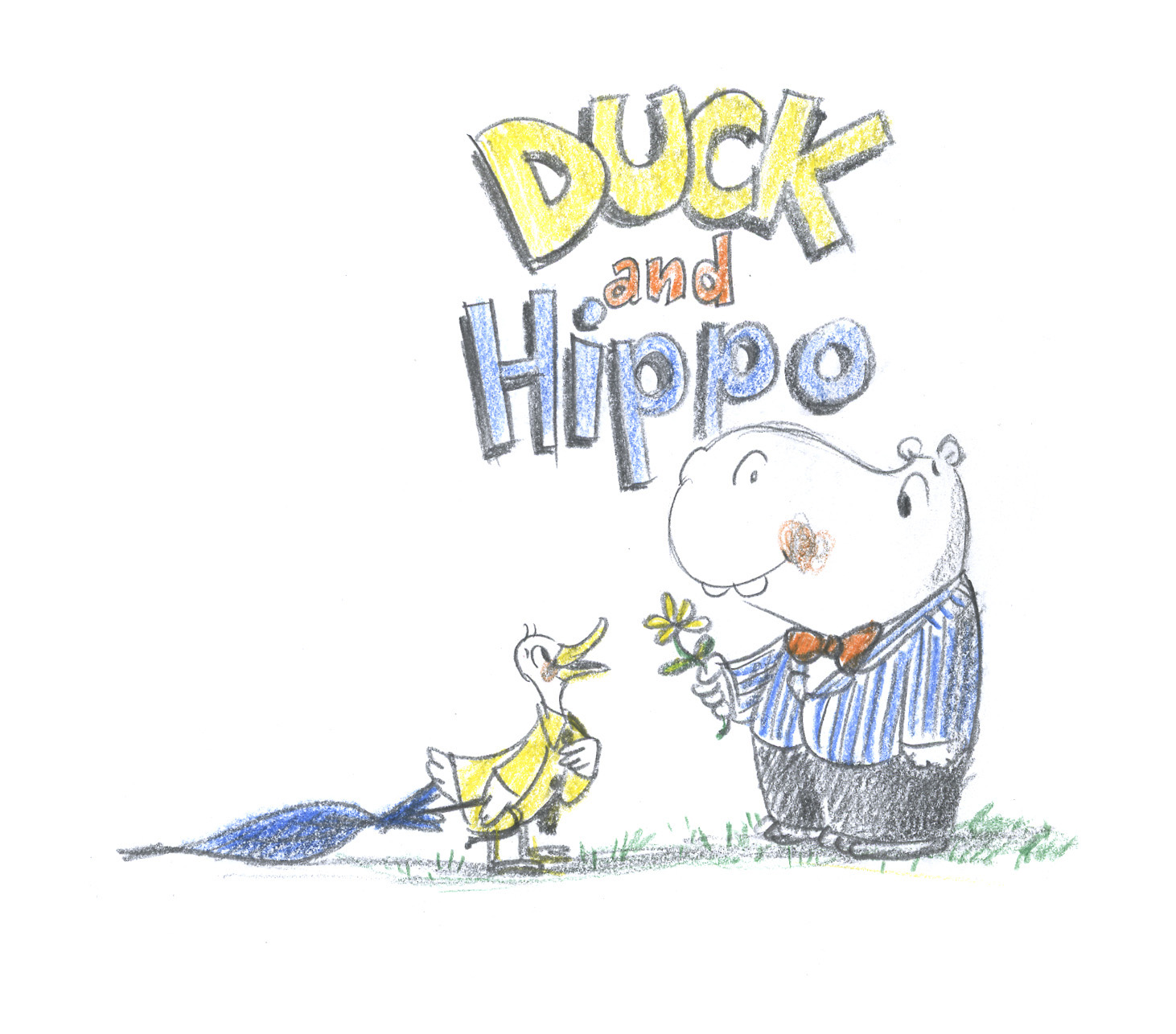
What is the first thing you do when you get a new manuscript?
I try to see it as a book, so I usually start scribbling right on the manuscript. Sometimes I’ll even write out the manuscript by hand (especially if it’s not too long!), just to get a sense of the story’s rhythm and flow. There’s something about moving a pencil across paper that helps me think.
What specifically about Duck and Hippo in the Rainstorm stood out to you?
It’s hard to pinpoint because I think it comes down to intangible qualities like charm and a lightness of touch, which is something I aim for in my own drawings. But I especially liked the playfulness of Jonathan’s story. In a way it reminded me of children playing, or of the stories children invent while playing. Also when I first read the story, I felt like I could see the characters, even if they did take a few drawings to fully appear. And I liked the balance in their relationship, Duck’s yang to Hippo’s yin.
How did Duck and Hippo’s characters develop?
I started sketching Duck and Hippo while on a holiday in Bali. Maybe it was my relaxed mood, but my very first drawings of Duck and Hippo look pretty close to their final version. That is not usually the case! I did find Hippo easier to draw than Duck. While I wouldn’t call Hippo a self-portrait, I do have some of his cautious personality. And my own appearance is definitely more Hippo than Duck (minus the fetching jacket and bow-tie)!
A lot of the emotion of Duck and Hippo in the Rainstorm comes from the illustrations. How much of that comes from the author’s cues and how much comes from your own imagination?
Aside from the story itself, there weren’t many prompts in Jonathan’s manuscript. I did have some excellent early guidance from our editor Marilyn Brigham and art director Merideth Mulroney at Two Lions, especially regarding the different personalities of Duck and Hippo. I do think one skill I have as an illustrator is that I’m quite a good reader—I can read myself and my drawings into the story. Also, once I feel like I’ve captured the characters I can get out of the way and let them tell the story.
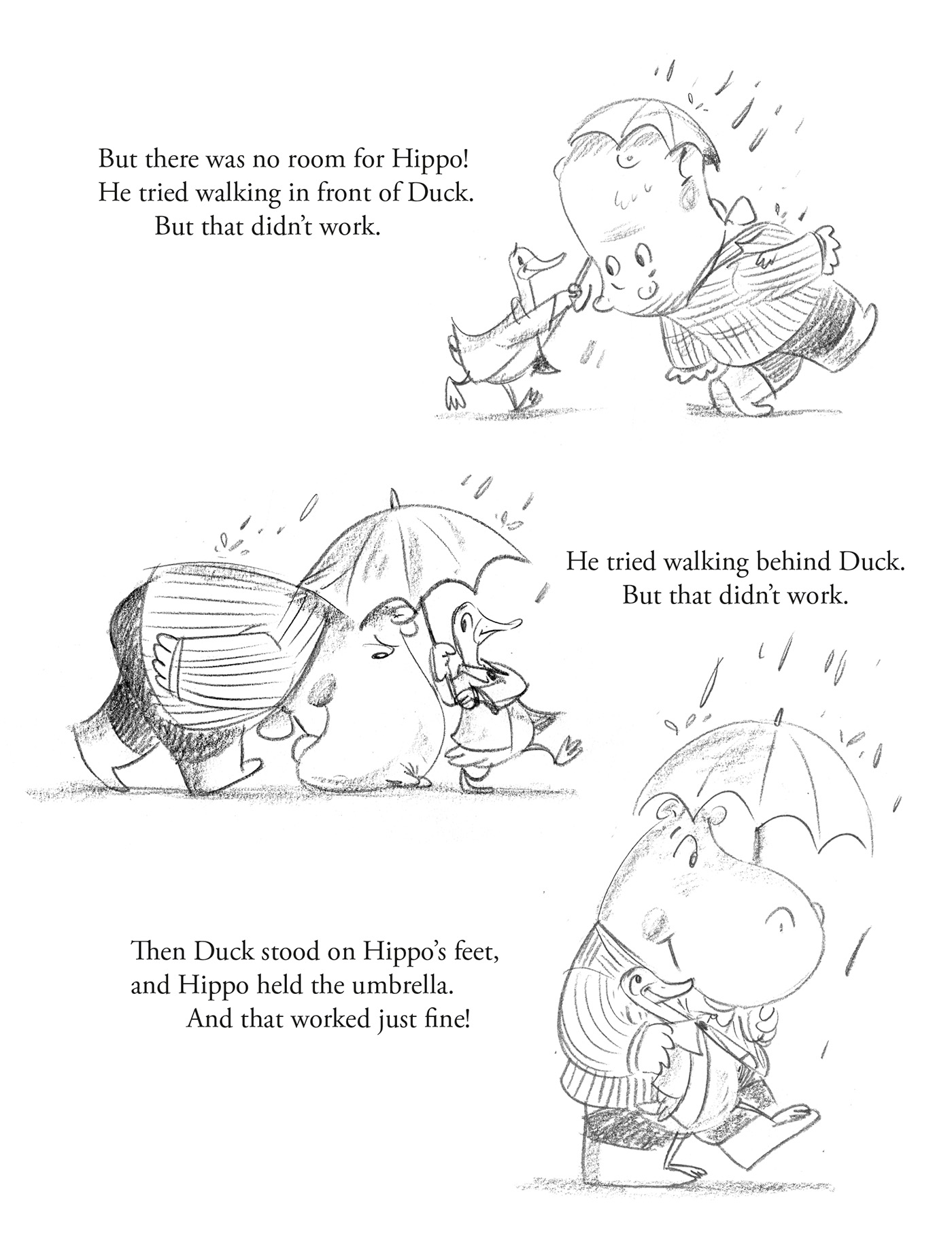
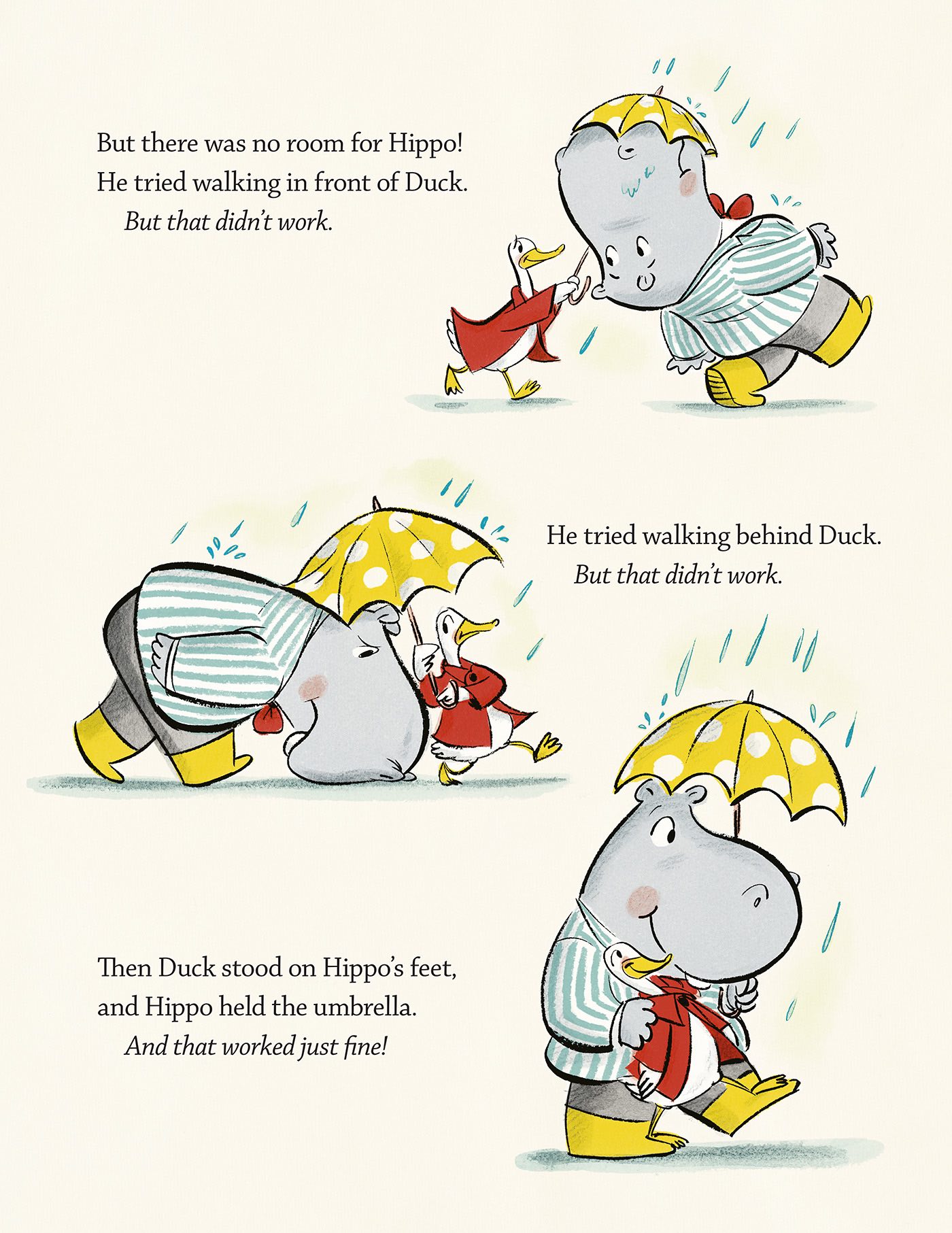
Do you have a favorite page or spread in Duck and Hippo in the Rainstorm? Why?
I think it’s a series of smaller illustrations of Duck and Hippo, when Duck first tries to share the umbrella with Hippo. I like the gentle slapstick of it (I especially like Hippo’s snout dragging along the ground). When I sketched this page I felt like I’d unlocked something about the characters, and how I wanted to approach Jonathan’s story.
What are you working on now?
I’ve recently finished the second Duck and Hippo book, which will be out in August. I’m currently working on a few Australian books, including a wonderful middle-grade novel about a boy and a kangaroo, written by Ursula Dubosarsky. I’m also illustrating a dinosaur book (with a literary twist!) for HarperCollins US. So, plenty to keep me occupied!
Is there a book from your own childhood that still resonates with you today?
The book I remember most clearly from my childhood is one that I may well have misremembered. In my mind it was a children’s book about Vincent Van Gogh. But in reality it was probably an entry in an illustrated children’s encyclopedia. Either way, I was definitely obsessed with it when I was young, and would read and reread it. So maybe I did always want to be an artist! Unfortunately I can’t find it now—the problem is I’m not exactly sure what I’m looking for. But I still hope to come across it someday.
There’s more fun with Duck and Hippo in the free downloadable coloring sheets: https://www.andrewjoyner.com.au/activities/
